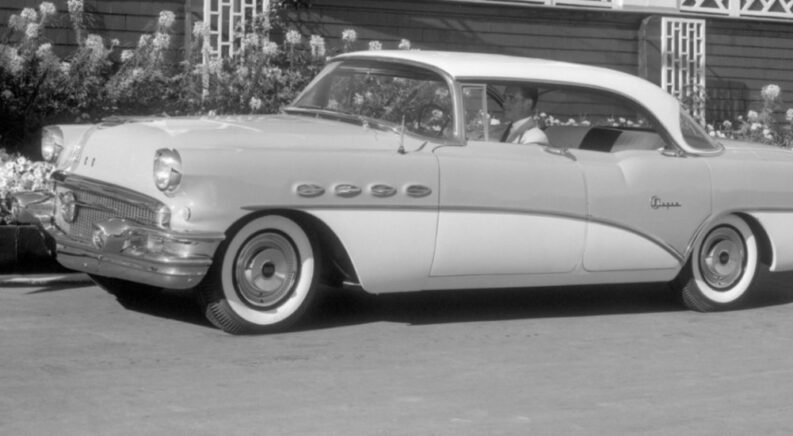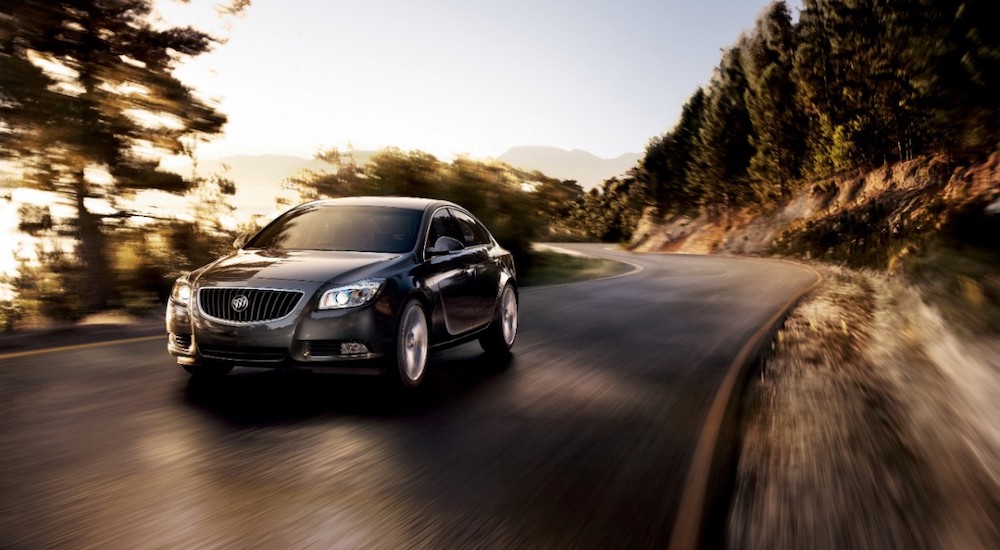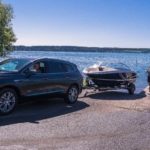With roots deeply embedded in the very dawn of the automobile era, Buick has played an instrumental role in the evolution of the industry. Throughout its journey, the company has cemented its reputation not just as a producer of luxury vehicles but as an innovator, a trendsetter, and a testament to American craftsmanship. So, if you’re checking out the inventory at your local used Buick dealer, take a moment to consider the history that lies behind your favorite Buick models and how today’s Buicks call back to the great models of the company’s past.
Humble Origins
Buick today is a thoroughly modern brand that stands for luxury, design, and technology. But it started in a barn in Detroit, with the ancestor of every Buick being hand-built by David Dunbar Buick and his engineer partner Walter L. Marr right around the turn of the Twentieth Century. By 1903, Buick had incorporated and moved to Flint, beginning the company that would sell tens of millions of cars over the next twelve decades.
From its inception, the Buick Motor Company positioned itself as an innovator in the automotive world. One of its earliest groundbreaking creations was the overhead valve engine, later touted as the valve-in-head engine. This novel engine design quickly garnered acclaim, setting it apart from other engines of similar size available at the time due to its superior power, reliability, and efficiency and becoming a template for other carmakers to copy.
The prowess of Buick wasn’t confined to just engine advancements; it was vividly showcased on racetracks. As early as 1908, Buick made its mark in motorsports. With a racing team featuring legends like Louis Chevrolet and Wild Bob Burmann, Buick dominated the racing circuits, amassing 500 trophies in merely three years from 1908 to 1910.
We’ll look at several of the classic models that grew out of Buick’s heritage of design, engineering, and performance from the early years up to now. Some of them are dream cars that you’ll be lucky to ever see in person, perhaps at a concourse or an auction, but others are cars that an average collector can still hope to acquire today.
1938 Buick Y-Job
Why was it called the Y-Job? Well, experimental cars at the time were designated as X models, and Buick’s designers considered this design study to go a step beyond that. Hence, the Y designation. In fact, it was so groundbreaking that today, it’s often considered the world’s first concept car. This one is definitely in the category of “dream car” since only one was built. Thankfully, it’s been restored and still exists today.
This trailblazing automobile, championed by General Motors’ foremost design authority, Harley J. Earl, epitomized a new vision for automotive design. The Y-Job, characterized by its Art Moderne aesthetics, boasted features that were decidedly advanced for its era, reflecting Earl’s design tenet of low and streamlined structures. Defining features included concealed running boards, hidden headlights, and an electrohydraulic convertible roof. Its beautiful “waterfall” grille is still reflected in the grilles of today’s Buicks.
Beneath its elegant exterior, the Y-Job housed a straight eight-cylinder 320-cubic-inch engine, which underwent several modifications, such as the replacement of its original manual transmission with a Dynaflow automatic. Adding to its historical significance, Earl didn’t confine the Y-Job to showrooms; he drove it as his personal car during the 1940s. Recognizing its impact, the Y-Job was inducted into the National Historic Vehicle Register in 2016.
1950 Buick Roadmaster
The Roadmaster lineup was actually produced between 1936 and 1958, although the name would be resurrected a few decades later. During this time period, the Roadmaster rode on Buick’s longest wheelbase and was offered in a variety of body styles ranging from sedans through coupes to convertibles and even station wagons. It represented Buick’s luxury and style.
For 1950, one of the most debated features was the front-end styling. A distinctive vertical grille, set against a broad one-piece bumper, became a hallmark of the 1950 design. These grille bars were not merely aesthetic; mounted directly onto the bumper, each served a dual function as a bumper guard, offering robust protection against impacts. Continuing the theme of design and safety, the Roadmaster was equipped with a large, curved windshield and backlight, providing enhanced visibility and passenger protection.
The Roadmaster was powered by a new line of Buick Fireball engines designed for top-notch performance across the automobile’s range. Notably, the Dynaflow Drive transmission, a significant advancement of the era, was made available for this model. For these reasons and more, the 1950 Buick Roadmaster, including its convertible and Estate wagon variants, holds a revered spot among collectors.
1963-1965 Buick Riviera
The Riviera name had been around since the 1940s to designate special models of other Buick cars like the Roadmaster, but in 1963, the Riviera stepped out as its own model. It shared virtually no major parts with any other Buick or any other GM model, for that matter. Dreamed up by GM’s design chief Bill Mitchell with inspiration from LaSalle automobiles and a Rolls Royce, the Riv incorporated those design elements into a sharp, aggressive style that was like nothing else on American roads at the time.
But the Riviera was more than just aesthetics; it was a mechanical marvel. At its heart was a robust V8 “nailhead” engine, a 401-ci powerhouse dispatching a hefty 325 hp to the rear wheels via Buick’s dependable Dynaflow automatic transmission. This combination enabled impressive speeds; Motor Trend clocked the Riviera sprinting from 0 to 60 mph in eight seconds, reaching a peak speed of 115 mph. For those craving even more power, a 340-hp, 425-ci V8 option was available for an additional fee.
Changes were minimal between the 1963 and 1964 models, but for 1965, the final models of the first-generation Riviera introduced a high-performance Gran Sport version. This GS featured a 425-ci Super Wildcat V8 engine, dual exhaust, enhanced suspension with robust components, and an updated rear axle ratio. The 401 V8 returned as the standard engine, while the headlights were hidden behind clamshell doors, a design initially envisioned for the 1963 model. The previously decorative air intakes on the rear side were removed, and tilt steering became a standard feature.
1984-1987 Buick Grand National and 1987 GNX
In the 1980s, the Buick Regal coupe was very popular. Indeed, you could hardly push a shopping cart across a grocery store parking lot without hitting one. To change its tame image and in a nod to its racing heritage, Buick began offering various option packages with turbocharged V6 engines and upgraded suspensions. By 1984, the full package became known as the Grand National, which stood out for its black-on-black-on-black, Darth Vader-esque appearance. In 1987, an ultra-high-performance, intercooled, twin-turbo model known as the GNX took the Grand National to a whole new level.
In 1984 and 1985, the Grand National’s turbocharged sequential fuel injection V6 pumped out 200 hp. But more importantly for its stoplight racing prowess, it produced a then-unheard-of 300 lb-ft of torque. This latter number was ten more than the Corvette for much less money. When the ‘Vette got a 25-horsepower boost, Buick responded in 1986 with air-to-air intercooling for an extra 35 hp, making the Grand National faster to 60 mph than a Ferrari Testarossa for a tenth of the price.
1987 would be the Grand National’s last hurrah since the following year, the Regal was moved to a front-wheel drive platform that could in no way whatsoever have handled this much power. So Buick celebrated with the fire-breathing GNX (Grand National Experimental), one of the most insane American cars ever built. With upgrades like a Garrett T3 turbo, the GNX was one of the fastest-accelerating cars on earth for its time period. All 547 GNXs were spoken for practically before they shipped out of the factory.
2012 Buick Regal GS
You probably didn’t expect such a recent Buick model to be on this list. But we’re all driving enthusiasts here at Car Life Nation, both writers and readers alike, so sometimes we want hot tips on cars we can actually hope to acquire for a reasonable sum. And here’s one of those hot tips: the fastest Buick ever built (in terms of top speed) is actually a quite recent model: the Buick Regal GS. Talk about a sleeper!
In 2012, Buick engineers Bill Rietow (driver) and John Townsend (navigator) secured a second-place finish in the 135-mph class of the Nevada Open Road Challenge with a stock Regal GS luxury sport sedan, missing their 40-minute target time by just 0.4 seconds. This achievement followed their previous victory in the 120-mph class the prior year. During the race, the Regal’s speed was recorded at 162 mph, highlighting the prowess of its 270-horsepower engine, which was recognized as one of WardsAuto World’s 2012 “10 Best Engines.”
The challenge occurs on a 90-mile stretch of Nevada State Highway 318 and focuses on maintaining consistent average speed, with winners often separated by minuscule time differences. The 2012 Regal GS used in the race was mostly stock, with the exception of added safety features and data collection computers.
Future Classics?
It’s hard to limit an article like this when Buick has such a long and glorious history. If there were enough space, we’d want to include a host of gorgeous models from the 30s, 40s, 50s, 60s, and beyond. Great names like Electra, Skylark, and Wildcat fill Buick’s past. Even the quirky little Reatta has its admirers. Who knows what recent models will be collectible in the future? Perhaps the Cascada will enjoy popularity in a future that seems to have fewer and fewer convertibles. Or the sleek TourX might appeal to station wagon enthusiasts in an age of SUVs. So keep an eye open for future classics: they could be anywhere!





